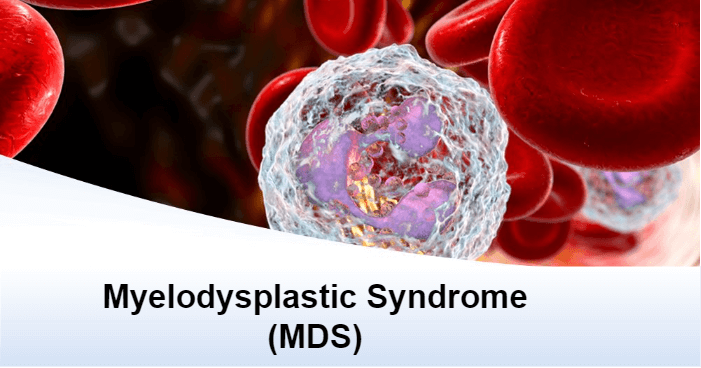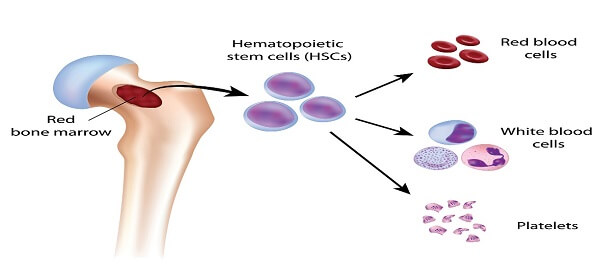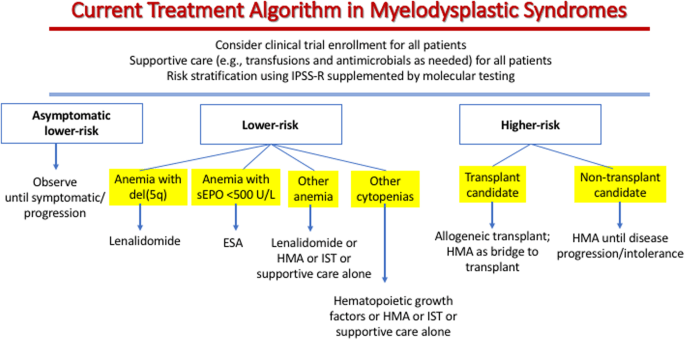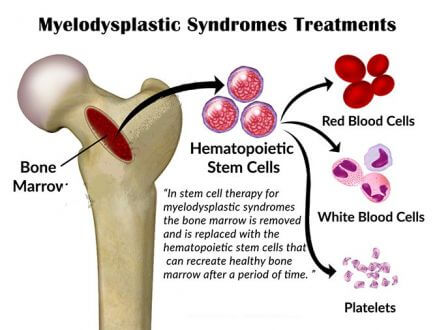What is the full form of MDSMDS: Myelodysplastic SyndromeMDS stands for Myelodysplastic Syndrome. MDS is a bone marrow failure disorder in which the bone marrow cannot produce healthy and mature blood cells. These immature blood cells stay inside the bone marrow and do not form blood. MDS can be seen in people of all age groups but primarily in people above 60. 
To understand MDS, it is essential to know about the blood and the process of its formation. What is blood?Blood is a fluid which consists of three types of cells RBC, WBC and Platelets, where all three float in a liquid called Plasma. These blood cells are formed inside the bone marrow. All three cells have different functions:
How is blood formed?
Blood cells are formed by hematopoietic stem cells inside the bone marrow, which is the spongy material in the bone. The process of formation of blood cells is known as hematopoiesis. In this process, all three types of blood cells are formed from the bone marrow stem cells; once fully mature, they leave the bone marrow and enter the bloodstream. Thus, blood is formed. What happens in MDS to the blood cells?In MDS, the hematopoietic stem cells are damaged, producing faulty blood cells that don't mature; these immature blood cells are known as blasts. The immature blood cells either die inside the bone marrow or enter the blood, but even after entering the blood, they cannot function as mature blood cells do. As a result, the body cannot get the supply of the required amount of blood as its blood-forming cells are damaged, and the bone marrow gets filled with blasts. Severity of MDS
The severity of MDS is based on the number of blasts in the bone marrow. In the normal bone marrow, the percentage of blasts is less than 5%.
Causes of MDSThe proper reason for the occurrence of MDS is not known, but the potential causes which have been identified are: -
Effects of MDSMDS is a situation when imperfect blood cells are produced, and in the body, the consequences of improper blood cells are seen, which the most common is anaemia when RBC is not made in the right amount. The effects on the body when RBCs are not appropriately formed are dizziness, irritability and pale skin. The risk of infections increases when the WBC count is affected, and excessive bruising and easy bleeding is seen due to a decrease in the number of platelets. Diagnosis of MDSThere are several diagnosis methods through which the problem of MDS is examined like: -
Treatment of MDSBased on severity and treatment methods, MDS treatment can be done by a haematologist or a medical oncologist. Different types of treatment available for MDS disorder are: -

Interesting facts about MDS
Next TopicFull Form
|
 For Videos Join Our Youtube Channel: Join Now
For Videos Join Our Youtube Channel: Join Now
Feedback
- Send your Feedback to [email protected]
Help Others, Please Share










